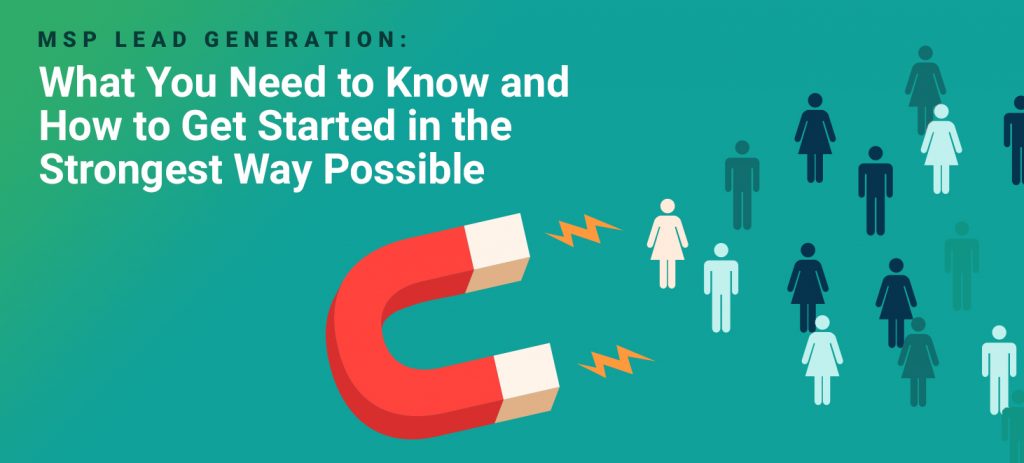
MSP Lead Generation – What You Need to Know and How to Get Started in the Strongest Way Possible
- My Personal Story with MSP Lead Generation
- The Art of MSP Lead Generation
- MSP Lead Generation: The Two Types of Qualified Leads
- Outbound Lead Generation vs Inbound Lead Generation
- Preparing Your MSP Lead Generation Plan
- Implementing Your Outbound Lead Generation Plan
- Implementing Your Inbound MSP Lead Generation Plan
- MSP Lead Generation is About the Long Game
As an MSP business owner, I understand the importance of MSP lead generation for the growth and scalability of my business. However, I also know that getting started with MSP lead generation can be a daunting task. In this article, I will share my personal story with MSP lead generation and provide insights into the art of MSP lead generation, the two types of qualified leads, outbound lead generation vs inbound lead generation, preparing your MSP lead generation plan, and implementing your outbound and inbound MSP lead generation plans.
MSP lead generation is all about bringing in as many qualified leads as possible directly to your managed services provider. It’s not about casting the widest net possible, but rather about casting the most precise net that you can. This means that your marketing efforts should be geared towards those people who are most likely to become your customers and who also align with your definition of an ideal customer. In this article, I will provide practical tips and strategies for MSP lead generation that will help you achieve long-term success.
Key Takeaways
- MSP lead generation is essential for the growth and scalability of your business.
- Your marketing efforts should be geared towards those who are most likely to become your customers and who align with your definition of an ideal customer.
- With the right strategies and implementation, MSP lead generation can be a successful long-term game plan.
My Personal Story with MSP Lead Generation
As someone who has been in the IT marketing industry since 1997, I have seen the evolution of MSP lead generation tactics over the years. Since 2017, I have been dedicated to helping MSPs generate leads and have worked with companies with revenue ranging from $250,000 to $25,000,000. Regardless of the size of the MSP, I have found that generating leads is always a challenge and requires a high level of dedication and commitment.
As the CEO of Tech Pro Marketing, my team and I are constantly improving our own lead generation processes to better serve our clients across North America. We have found that there is no one-size-fits-all approach to MSP lead generation. The tactics used by a $250,000 MSP will differ from those used by a $25,000,000 MSP, but the level of dedication and commitment required remains the same.
To be successful in MSP lead generation, it is important to stay up-to-date on the latest trends and technologies. This includes utilizing social media platforms, investing in PPC campaigns, and nurturing leads through email campaigns tailored to their specific pain points. By leveraging these tools, MSPs can streamline their lead generation processes, target the right prospects, and personalize their marketing efforts for better conversion rates.
The Art of MSP Lead Generation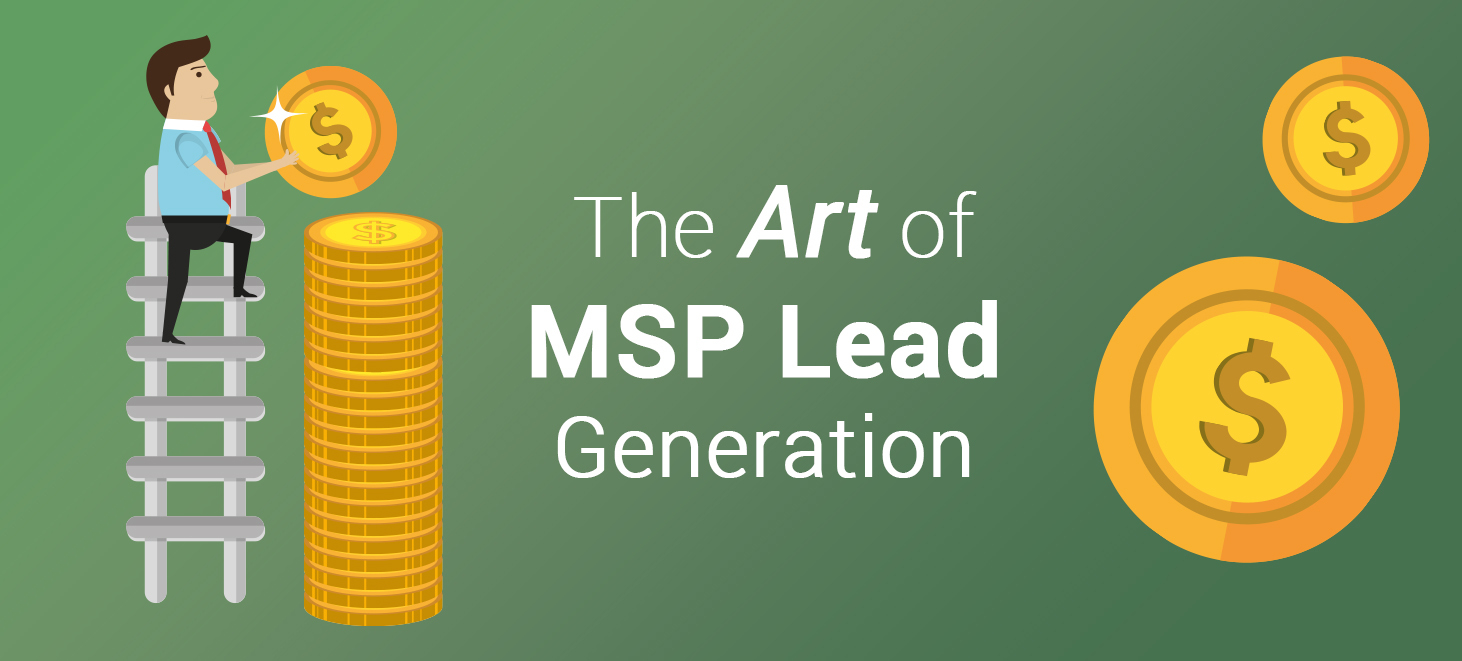
The right MSP lead generation technique can be a great way to cut through all the noise, getting your message in front of the people who matter as fast as you possibly can. This leads to two unique benefits:
- Not only does this ultimately help improve the return on investment for your marketing efforts, but
- It also unlocks the most important benefit of all: you always have a steady stream of new customers coming straight to your (virtual) door.
MSP Lead Generation: The Two Types of Qualified Leads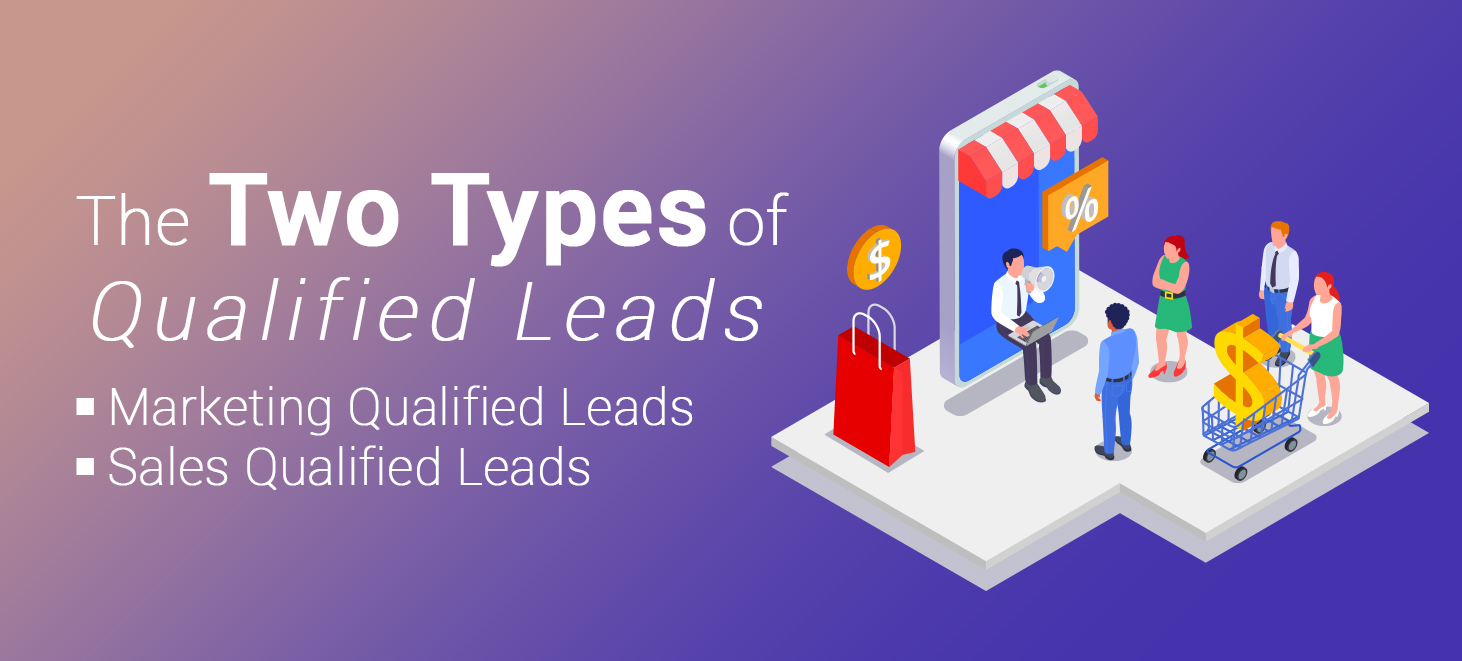
When it comes to MSP lead generation, there are two types of qualified leads that you need to focus on: marketing qualified leads (MQLs) and sales qualified leads (SQLs).
Marketing Qualified Leads
An MQL is a prospective customer who has been identified as a fit for your services, but has not yet expressed explicit interest in your company. These leads have been thoroughly researched and deemed “ready” to be marketed to. They may or may not understand managed services and may still need convincing as to how one would fit into their business.
Sales Qualified Leads
An SQL, on the other hand, is a prospect who has already indicated interest in what your business has to offer. They may have come across your company through existing marketing efforts or through some other point of contact with your company. These leads are likely ready to make a decision and are at the point where they’re ready to buy.
The major difference here between an MQL and an SQL ultimately comes down to their readiness to buy. The former is still likely at the point where they’re slowly building interest in your services. They may or may not understand managed services, and may still need convincing as to how one would fit into their business. The latter, on the other hand, is likely ready to make that jump – now, you just need to make sure they do it with YOU. To effectively convert these leads into customers, it’s important to tailor your approach to their specific needs and readiness to buy.
Outbound Lead Generation vs Inbound Lead Generation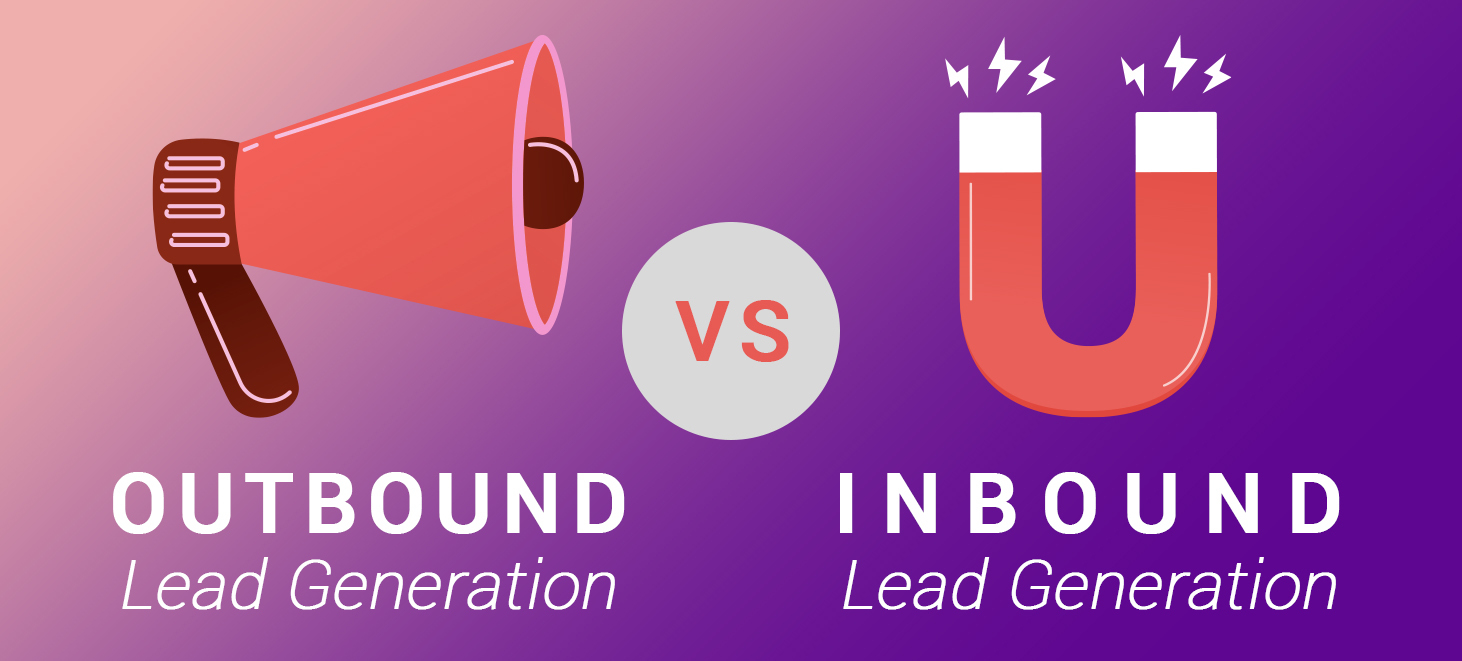
Many MSP owners that I speak to think of lead generation as synonym for cold calling – but that couldn’t be farther from the truth! If the goal of MSP lead generation is to generate leads, then there are many many ways to accomplish that – most of which fall into one of two categories: outbound lead generation and inbound lead generation.
Outbound MSP lead generation describes those tactics where your MSP reaches out to your prospective customers and makes first contact. Inbound MSP lead generation describes those tactics where your prospective customers make first contact with you.
Preparing Your MSP Lead Generation Plan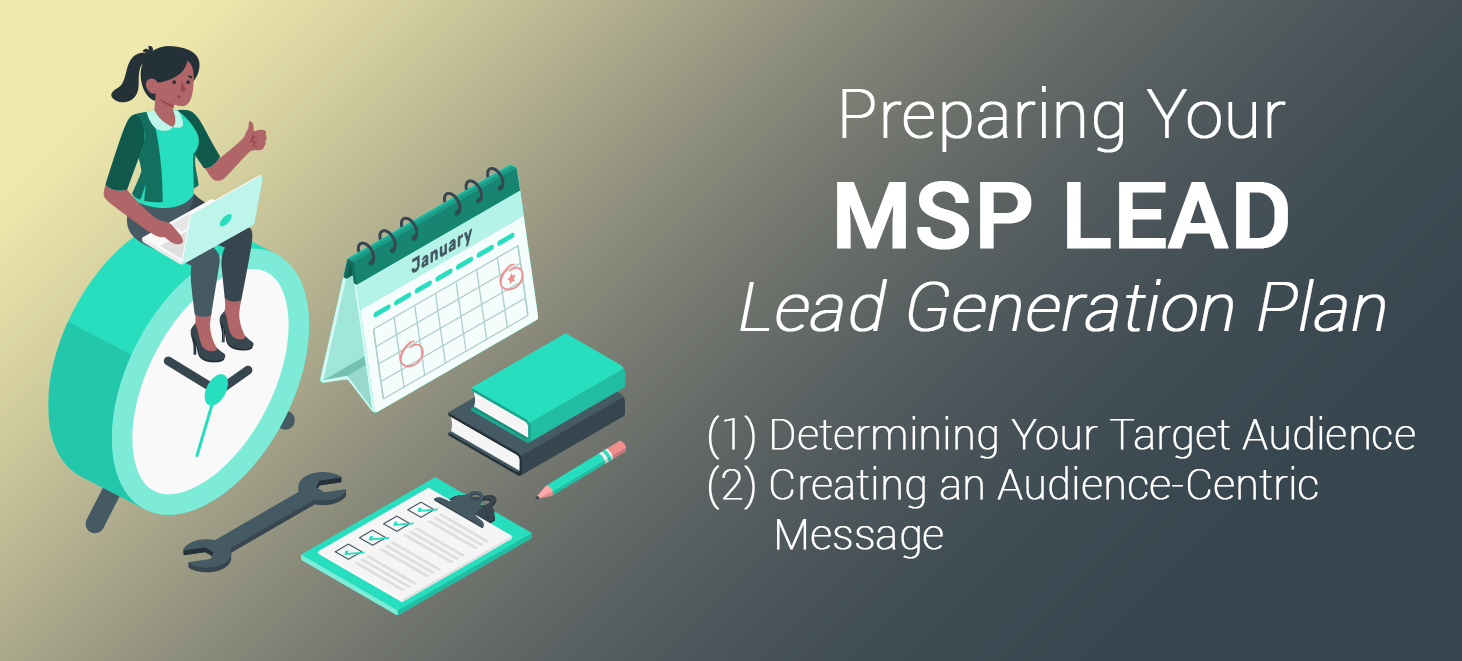
Generating MSP lead generation ideas is one thing, but implementing them is another. You need to have a well-optimized process in place to ensure each one of your ideas can generate the desired results. Make sure to keep the following steps in your implementation process.
Determine Your Target Audience
The key thing to understand is that if you want to make sure your MSP lead generation soars, you need to make sure that your message is dialed into the people who you actually want to become your customers in the first place. You can’t hope to get to that point without first knowing as much about these people as you possibly can.
- Service Location: If you’re a managed services provider that focuses on providing co-managed services in a 25-mile geographic area, for example, you’ll want to begin by learning everything you can about CIOs and CTOs within that precise distance of your office.
- Customer Size: Some MSPs may create target audiences based on their size. You can determine the size by revenue, number of employees, and/or number of workstations. Just make sure to stick to the metrics you choose and optimize your marketing efforts accordingly.
- Industry Type: If you’re a niche-specific managed services provider who works exclusively with dentist offices, and you can work with offices all over the country because you can support them remotely, then your target audience begins to take a different shape. Here, you might be targeting dental office administrators or even the dentists themselves if you specialize in helping private practices.
Create an Audience-Centric Message
The next step is to develop an audience-centric message. This ensures that your MSP lead generation campaigns focus on solving the problems your target audience has, instead of simply promoting your brand.
You can create buyer personas to help you refine your marketing message further. Buyer persona can tell you about the various pain points of your target audience, and potential solutions they are looking for. You can find a variety of tools online to help you create buyer personas.
In addition to a buyer persona, you also need to have a unique selling proposition or USP. Your USP will tell your target audience why they should choose you instead of your competitors. Make sure the WHY is consistent throughout your marketing efforts.
Implementing Your Outbound Lead Generation Plan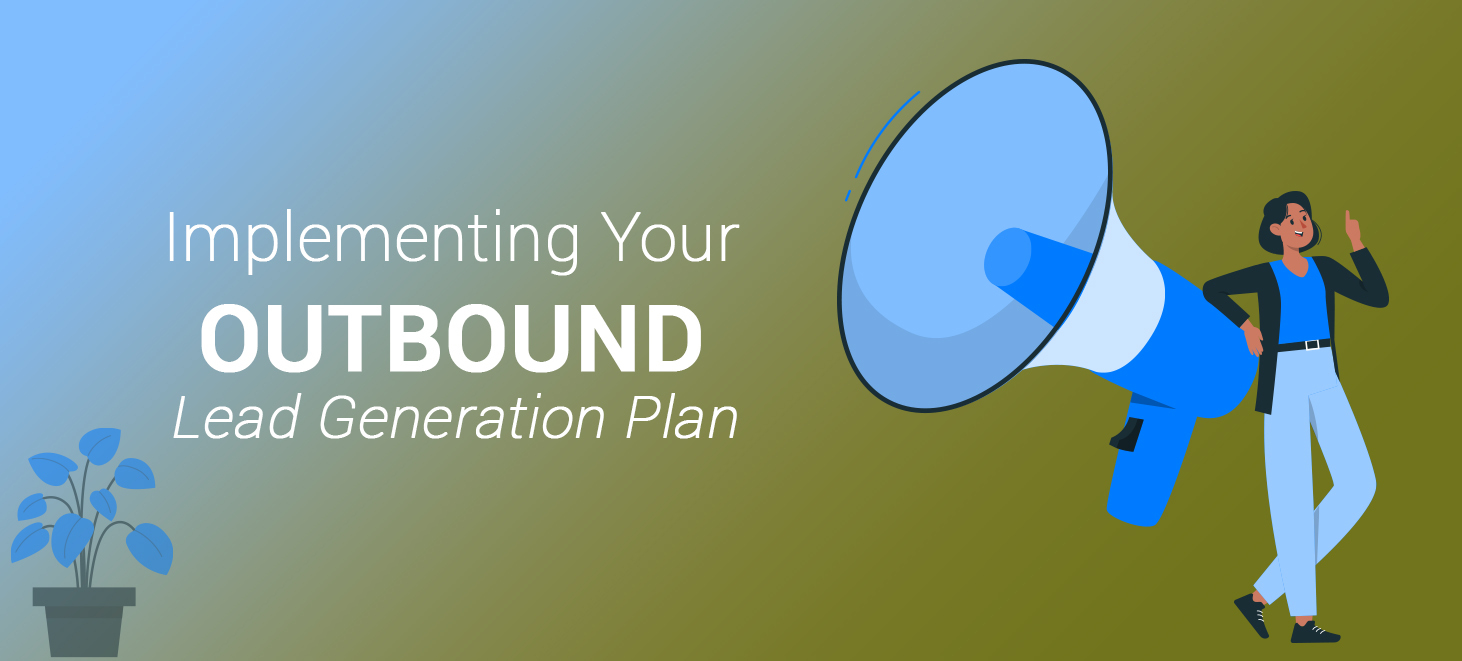
Once you’ve identified your target audience and developed the messaging that you know is going to resonate with them, you can then move onto implementing your lead generation plan.
For MSPs eager to grow their client list, outbound lead generation can be a powerful engine for business expansion. But don’t be fooled by the seemingly straightforward nature of appointment setting; it’s a challenging endeavor that demands not just time and money but also a strategic use of resources and sales acumen to consistently deliver results.
If you’re on a mission to scale your IT business through B2B appointment setting, here’s a comprehensive plan for your SDR (Sales Development Representatives) team to execute:
-
Prospect List Building: Start by leveraging sales intelligence tools and tapping into the well of referrals from your existing, satisfied clientele to compile your prospect list.
Building Your Contact List
There are a number of different ways that you can build a quality contact list – all of which are worth exploring to some degree:
- Think local. If your MSP lead generation efforts are focused on reaching out to small businesses in your area and you happen to be located in a large office park with 50 other businesses, it makes sense that your list building efforts would begin by researching those business right there at home.
- Explore your online network. At Tech Pro Marketing, a lot of our clients are using LinkedIn as a way to build their lists – just make sure you’re using your personal profile to do so, as a company page doesn’t actually allow you to reach out and initiate conversations with other people.
- Purchase a list. There are many data vendors and internet research firms who can help you build your list. Just one word of caution: make sure you work with a reputable vendor and manual review all lists, as marketing to an outdated or irrelevant list can hurt your reputation along with just being ineffective.
-
Conversational Scripts: Develop a talk track that’s conversational and adaptable, designed to kickstart dialogues with decision-makers effectively.
-
Setting Clear Goals: Establish concrete objectives for each campaign, from lead count to sales meeting quotas and revenue benchmarks from your MSP appointment setting initiatives.
-
Choosing Effective Channels: Different channels yield different results. Identify whether cold calls, emails, LinkedIn outreach, or a mix works best to meet your prospects where they’re most active.
Outbound Lead Generation Tactics
From here, you should next make sure that your MSP lead generation efforts are stable by deciding on and creating your workflows for getting your message across. Again, there are a lot of different ways to do this. You could:
- Direct Mail: Send out engaging, targeted mailers.
- Cold Outreach: Employ cold calling or emailing to connect with prospects.
- Social Connection: Use platforms like LinkedIn for direct engagement.
Most likely, you’re going to want to do a combination of many of these things to make sure you’re connecting with people in exactly the right way, regardless of what that way happens to be.
-
Timing Your Outreach: Nail down the optimal times for outreach by analyzing response patterns and adjusting accordingly.
-
Persistent Follow-Up: Keep tabs on your sales pipeline and engage in timely follow-ups to nudge prospects closer to a sale.
-
Monitoring Campaigns: Utilize lead management systems or CRMs to track and monitor the pulse of your campaigns then adjust your strategies based on prospect interactions
-
Continuous Optimization: Encourage your SDR team to regularly test and refine your processes. Since every market and sales funnel is unique, it’s critical to discover and implement what’s most effective for your specific context.
By methodically implementing these steps, your MSP is well-positioned to connect with new leads, nurture them effectively, and ultimately drive your business growth.
Proven MSP Marketing Strategies To
FILL YOUR
SALES PIPELINE
Is this your first time visiting
Tech Pro Marketing?
Get access to
12+ lessons*
to accelerate your lead gen efforts
in our six-week e-mail course.
Email Course Sign Up
* FREE for newsletter subscribers.
Outbound Lead Generation is About More Than Just Sales
But critically, you MUST understand that in order to get your outbound MSP lead generation efforts started in the right way, you NEED to look at this as more than just another sales opportunity. Because the fact of the matter is, it isn’t. Not by a long shot.
Outbound MSP lead generation isn’t just about reaching out to someone and asking them for their business. What you need to do is:
- provide value to them that they wouldn’t otherwise have access to, and;
- offer yourself as an invaluable resource they can lean on in the future.
Indeed, this is where a lot of people run into trouble in terms of MSP lead generation. At Tech Pro Marketing, we know from our own experience that you can have up to 80 different touch points before you even get a single new customer. A salesperson might make seven attempts before they even get into contact with someone to begin with.
All of that hard work and effort is worth it… provided that you don’t then give up on the opportunity by turning it into yet another generic attempt to sell to someone.
Once you do have someone’s attention, don’t waste it. If you overwhelm someone via one channel – like if you just keep calling them over and over again – the chances are high that you might bother them and at that point, the chances of them actually wanting to do business with you are slim.
But if you send them their newsletter filled with valuable, relevant content that they can learn something from, and if you call them up and ask to take them to coffee, and then meet them at a networking event, suddenly you’re talking about something entirely different. Right there, you have three different touchpoints that not only help establish your presence in an authentic and genuine way, but that also allow you to start positioning yourself as their go-to person on the topic of managed services.
Implementing Your Inbound MSP Lead Generation Plan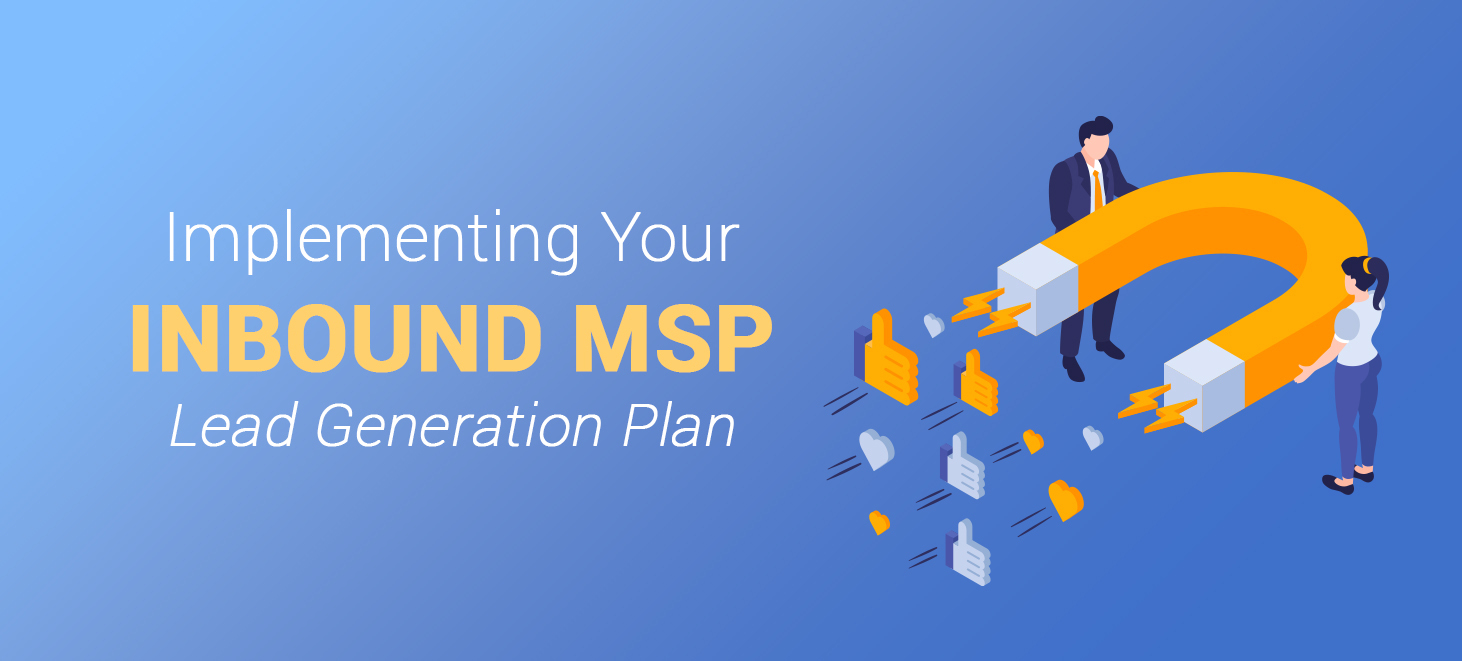
While outbound MSP lead generation tactics is all about finding your prospects and making yourself known, inbound MSP lead generation is all about letting your prospects find you.
Build a Website That Drives Conversions
There is no doubt that your website is going to be the center of any inbound campaign. Whether you are utilizing MSP SEO or paid ads, you want to be the one MSP that shows up on the top of the search results for “IT Support Near Me,” and furthermore you want to have a website that then compels that searcher to fill out your contact form.
To that end, your website must:
- Connect with your target audience and the problems that they are facing – remember that your customers don’t necessarily care about the services you provide, they care about the solution to their problems.
- Explain your services in a precise and easy-to-understand language. Avoid technical jargon.
- Have a clear cut call to action (CTA) that tells your audience exactly what to do next once they land on your website.
- Immaculate on-site SEO – in any one market throughout North America, you can be sure that you will be competing with dozens of MSPs visibility – pay attention to your on-site SEO and make sure that you give yourself every edge that you can.
Develop a Content Marketing Strategy
After fine-tuning your website to attract organic traffic, the next step is crafting a standout content marketing strategy. Staying at the forefront of search engine rankings and continually drawing in visitors hinges on regularly producing fresh content. Keep your service pages up-to-date and ranking high for terms your audience frequently searches. Additionally, churn out multiple engaging, keyword-focused blog posts each week. By consistently delivering content that addresses your target customers’ issues, you’re bound to see an uptick in traffic and, more importantly, in conversions from visitors to leads.
Remember, without compelling, high-quality, and relevant content, your campaigns won’t capture the visibility necessary to reel in leads. Superior content that’s rich in relevant keywords and published regularly will boost your rankings on Google for the terms critical to your business.
Here’s your game plan:
-
Conduct Thorough Keyword Research: Don’t just chase after the most popular keywords. Zero in on the terms your customers are actually typing into search engines. For instance, are they looking for “business IT solutions”, or are they in need of “IT support services”?
-
Give Each Content Piece a Purpose: Whether it’s a blog entry or a webpage, ensure every piece of content is goal-oriented and adds distinct value.
-
Maintain a Consistent Publishing Schedule: By regularly creating content that resonates with small businesses in need of IT support, Google will begin to recognize you as an authority on the subject. This will progressively improve your rankings for a broader array of related keywords.
By implementing these steps, your MSP will not only establish itself as a thought leader but also capture the attention and business of your ideal customers.
Invest in Paid Advertisements
While most people tend to focus on their organic MSP lead generation tactics, they use paid advertisements as an afterthought. If you want to take advantage of the latest MSP lead generation trends, however, you will need to invest in paid marketing from the beginning.
Unlike organic marketing, paid ads can help you generate leads more quickly. As some MSPs can’t afford to wait for a long-term organic marketing strategy to kick in, paid ads are the right choice for them.
While Google Ads is the most popular paid advertisement channel out there, other search engines like Bing and Yahoo, along with social media platforms like Facebook and LinkedIn also have paid advertisements of their own. You should invest in suitable ad programs.
Boosting Lead Conversion with Strategic Marketing Materials
When your phone calls and emails aren’t making the desired impact on IT decision-makers, it might be time to step up your game with targeted marketing collateral. These materials can captivate prospects’ interest and support their journey through the sales process.
Consider developing a range of sales-focused materials such as:
- Informative company brochures
- Infographics highlighting compelling statistics
- Detailed sell sheets and whitepapers
- Engaging client case studies
- Practical guidebooks/ebooks
These resources are not only valuable additions to your website and social media channels, but they also serve as powerful tools in email marketing campaigns. They can act as lead magnets, drawing in potential clients for your IT business.
Imagine a visitor lands on a blog post on your site about the critical need for robust network security. The blog educates them on the topic, but then, at the end, a call-to-action (CTA) offers an exclusive network security checklist. Interested readers can exchange their contact details for this valuable content, transforming them from casual browsers into leads in your sales pipeline.
Partnering with an Outsourced Lead Generation Company
There are compelling reasons why an MSP might opt to partner with an outsourced lead generation company:
- Resource Constraints: Without enough time or in-house expertise, running an effective lead generation campaign can be challenging.
- Specialized Expertise: Lead generation companies bring specialized skills and experience to the table, potentially boosting the campaign’s success rate.
- Flexible Scaling: Outsourcing allows for the easy scaling of lead generation efforts to match business needs without the commitment of hiring more staff.
- Cost Efficiency: It can be more economical to pay for services as needed rather than employing a dedicated in-house team.
- Focus on Core Strengths: Outsourcing frees up MSPs to concentrate on their primary services and business growth, rather than splitting focus on lead generation.
- Advanced Tools and Tech: Lead generation companies often have the latest technologies and tools that can better target and engage potential clients.
- Enhanced Outcomes: With the expertise and tools provided by a lead generation company, MSPs can expect to see not just more leads, but leads of a higher quality.
By leveraging specialized marketing materials and considering the partnership with lead generation experts, MSPs can significantly enhance their lead conversion rates and ultimately grow their customer base.
MSP Lead Generation is About the Long Game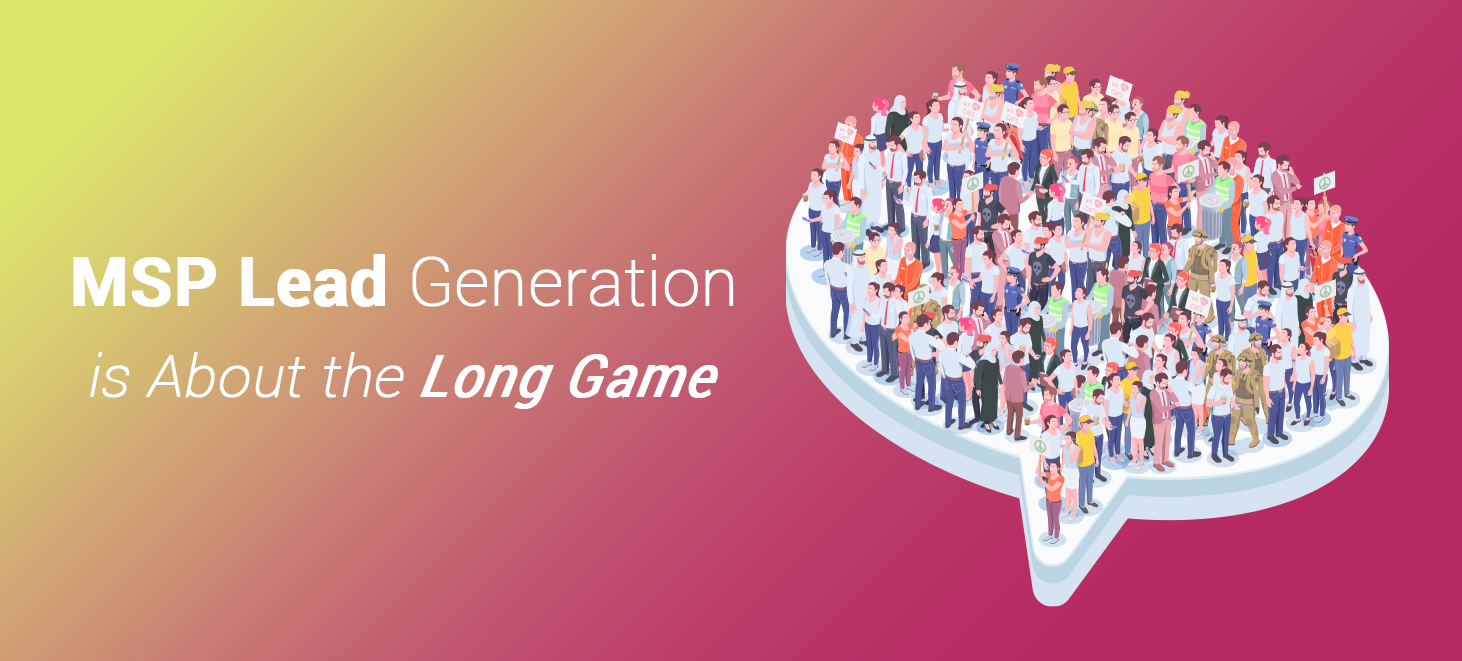
In the end, MSP lead generation is all about bringing new people to your business. But in a larger sense, it’s also about something more important. It’s a way to grow and scale your business so that, eventually, you don’t actually have to worry about generating leads anymore.
This is why it’s so important to make sure that your MSP lead generation efforts get off on the right foot. Because if they do, eventually they’ll start to build their own momentum. One happy customer becomes two, who then become five, who then become ten.
Rather than shelling out $200,000 per year for a dedicated salesperson who can generate and close their own deals, you can instead learn to do it yourself. You can set up a system and a process that works well because it was built from the top down with your specific managed services provider in mind.
At that point, you can eventually step away from the sales side of your organization and focus on what you always wanted to do in the first place: helping people get the most out of their technology.
That was always your ultimate goal, and MSP lead generation is absolutely a big part of how you do it. If you’d like to talk to someone in a bit more detail about your own MSP lead generation efforts, terrific – we’re here to help. Schedule a strategy call with us at Tech Pro Marketing or connect with me on LinkedIn so that we can get started coming up with new and innovative ways to help empower your MSP lead generation process for the next decade and beyond.
Here are some resources to help you get started with MSP Lead Generation:
-
Inbound vs. Outbound Marketing: Which is Right for your MSP?
-
MSP Marketing in 2024: What Should MSPs Prioritize This Year
-
MSP Websites – Everything MSPs Need to Know Before Building a Website
-
What is MSP Marketing? Getting Started Marketing Your Managed Services Provider
FAQs
- What is MSP lead generation?
MSP lead generation is the process of attracting and converting potential clients into interested prospects for a Managed Service Provider (MSP). This involves identifying companies that could benefit from the MSP’s IT services and nurturing them through various marketing strategies until they are ready to engage in a business relationship.
- How do you generate leads on MSP?
Generating leads for an MSP involves a mix of inbound and outbound marketing tactics. This can include content marketing, SEO, pay-per-click advertising, social media engagement, email campaigns, webinars, networking events, and partnerships. The goal is to establish your MSP as a thought leader and go-to provider for IT services, thus attracting potential clients.
- What is MSP in marketing?
In marketing, MSP stands for Managed Service Provider. An MSP in marketing is a company that specializes in providing a comprehensive suite of IT and support services to other businesses on a subscription basis. MSPs help businesses manage their IT infrastructure and operations, offering services such as network management, cybersecurity, data backup, and technical support.
- What is an MSP environment?
An MSP environment refers to the operational setting in which a Managed Service Provider manages and supports the IT systems and services for their clients. This environment typically includes the MSP’s infrastructure, tools, software, and the processes used to monitor, maintain, and protect the client’s technology assets. It is designed for efficiency, scalability, and security, allowing businesses to focus on their core functions while the MSP handles their IT needs.
